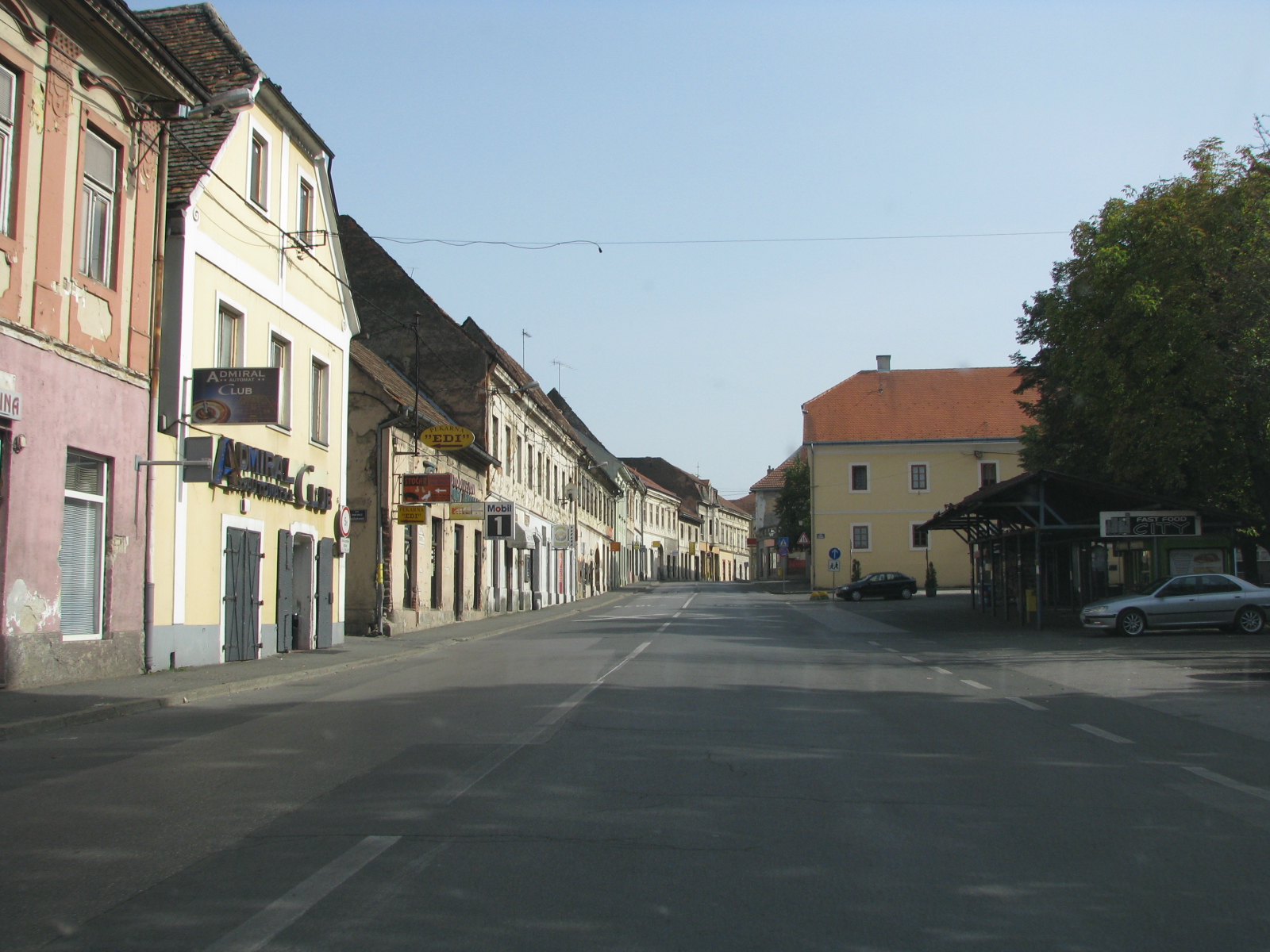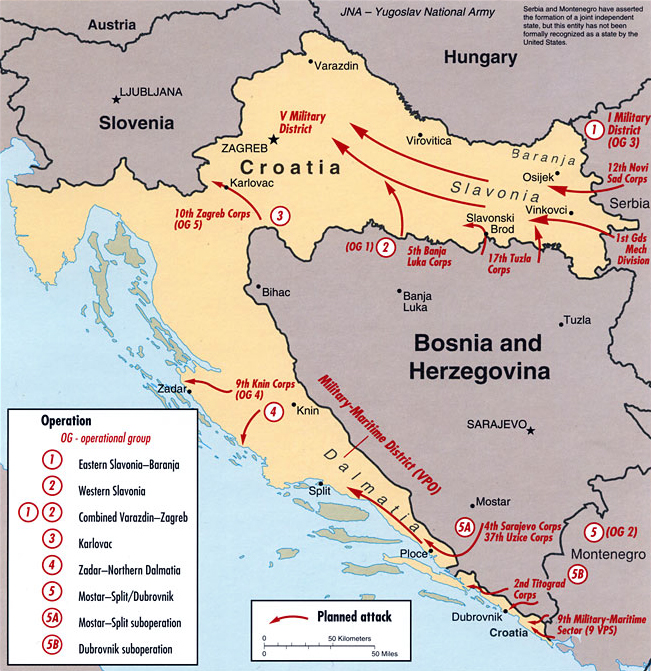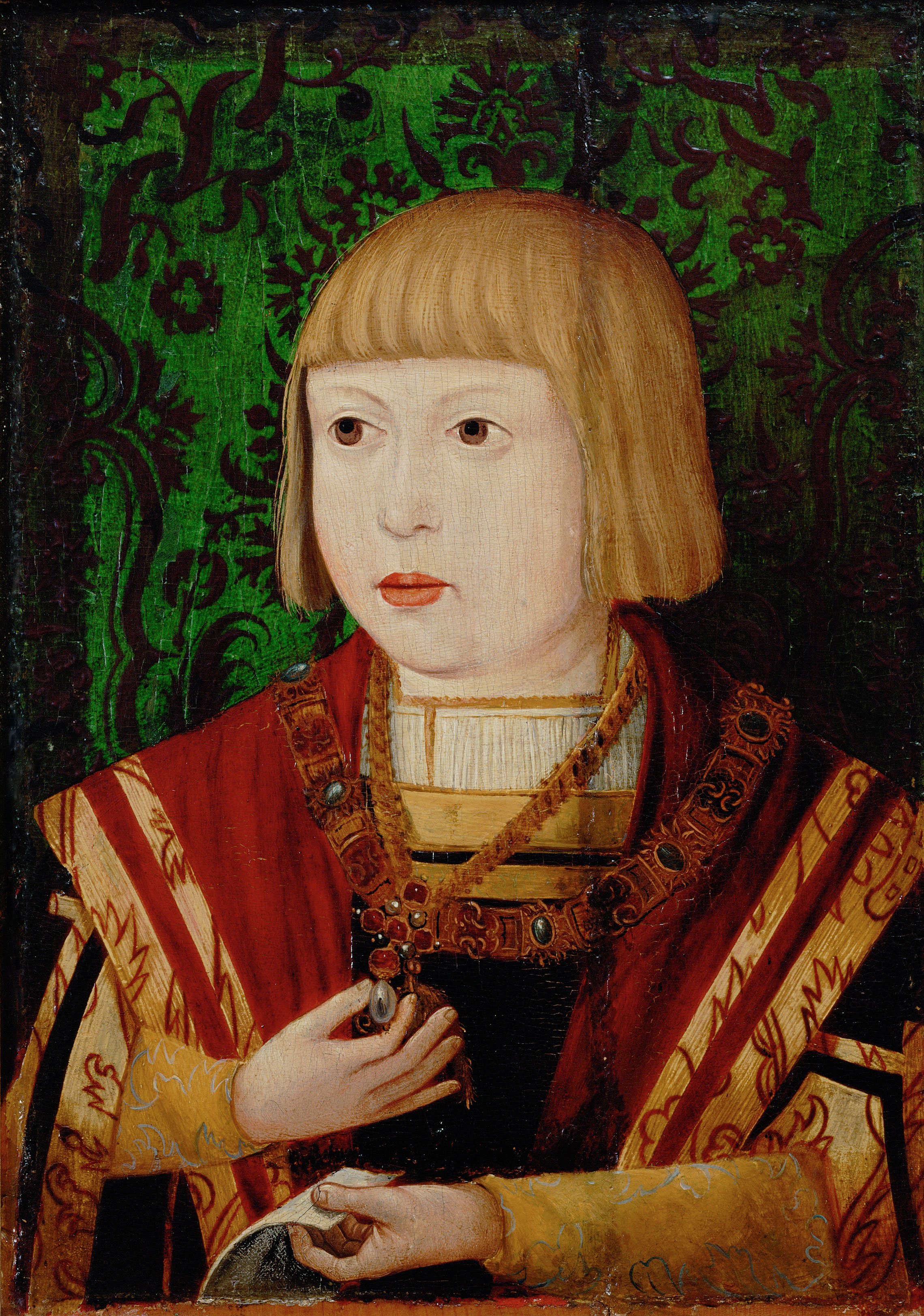|
Blinja
Blinja is a village in central Croatia, in the Town of Petrinja, Sisak-Moslavina County. It is connected by the D30 highway. History Petar Keglević obtained the medieval fortification in Blinja in the 16th century. In 1559 Ivan Lenković proposed destruction of the fortress so that it would not fall into Ottoman hands. In a report written by the commissioner of the Holy Roman Emperor Ferdinand I, the fortress is described as the last one before the Ottoman-controlled lands, and that its walls were damaged and surrounded by water. During the wider Siege of Gvozdansko offensive in 1578, the fortress was under siege and damaged but was not conquered by the Ottomans. The fortress remained unconquered until the Ottoman retreat after the end of the Great Turkish War and the signing of the Treaty of Karlowitz. Since that time the fortification has been unused and has deteriorated over the years. The modern day ruins of the fortification are located in the forest-covered hill south-east ... [...More Info...] [...Related Items...] OR: [Wikipedia] [Google] [Baidu] |
Petrinja
Petrinja () is a town in central Croatia near Sisak in the historic region of Banija, Banovina. It is administratively located in Sisak-Moslavina County. On December 29, 2020, the town was 2020 Petrinja earthquake, hit by a strong earthquake with a magnitude of 6.4 , causing significant damage to the town. Name The name of Petrinja has its roots in Greek language, Greek πέτρα - ''pétra'', meaning "stone" through Latin language, Latin '':wiktionary:petrus, petrus''. Another possibility is that Petrinja was named after the church of St. Peter from the time of the Diocese of Sisak. It is said that the town existed in Ancient Rome, Roman era in the area of Zrinska Gora, which is very rich in stone. Climate Since records began in 1981, the highest temperature recorded at the local weather station was , on 14 August 2003. The coldest temperature was , on 12 January 1985. History Middle Ages West of Petrinja is Petrova gora (Peter's mountain), site of the 1097 Battle of Gvozd Mo ... [...More Info...] [...Related Items...] OR: [Wikipedia] [Google] [Baidu] |
D30 (Croatia)
D30 is a state road in central Croatia connecting Velika Gorica, Petrinja and Hrvatska Kostajnica to Croatian motorway network at the A3 (Croatia), A3 motorway Velika Kosnica, Kosnica interchange and to the City of Zagreb via Radnička Road. The road is long. As with all state roads in Croatia, the D30 is managed and maintained by Hrvatske ceste, state owned company. Traffic volume Traffic is regularly counted and reported by Hrvatske ceste, operator of the road. Sections of the road running through Velika Gorica and Petrinja are not covered by the traffic counting sites, but the section is assumed to carry a substantial volume of urban traffic in addition to the regular D30 traffic. Road junctions and populated areas {, class="wikitable" , - , colspan="2" style="text-align:center; background:blue; margin-top:15;", D30 junctions/populated areas , - style="text-align:center; background:#00c0f0;" , , Type , , Slip roads/Notes , - , , Kosnica interchange A3 ( ... [...More Info...] [...Related Items...] OR: [Wikipedia] [Google] [Baidu] |
Petar Keglević
Petar Keglević II of Bužim (died in 1554 or 1555) was the ban of Croatia and Slavonia from 1537 to 1542. He was also a captain of Bihać from 1535 to 1539. Career Keglević was captain from 1521 to 1522 and later ban of Jajce. In 1526, some months before the Battle of Mohács, he got the '' jus gladii'', even though he did not take part in the battle (he arrived too late). In (1525 - 1526) he becomes one of the captains and chief officers of the royal Hussars. From 25 May 1533 to 9 December 1537, he was the royal commissary for Croatia and Slavonia as attorney general. From 1537 to 1542, he was the ban of Croatia and Slavonia. The Battle of Mohács was very traumatic. The history of the persons who were relevant after that - among them also Petar Keglević - is described again and again. A part of Zagreb is still named after him. He distinguished himself in battles against the Ottoman Empire and he achieved a special agreement. After the battle of Mohács, he sided with ... [...More Info...] [...Related Items...] OR: [Wikipedia] [Google] [Baidu] |
Military Frontier
The Military Frontier (; sh-Cyrl-Latn, Војна крајина, Vojna krajina, sh-Cyrl-Latn, Војна граница, Vojna granica, label=none; ; ) was a borderland of the Habsburg monarchy and later the Austrian and Austro-Hungarian Empire. It acted as the '' cordon sanitaire'' against incursions from the Ottoman Empire. The establishment of the new defense system in Hungary and Croatia took place in the 16th century, following the election of Ferdinand I as king. Six districts under special military administration were established in Hungary and Croatia. The Croatian Military Frontier and the Slavonian Military Frontier came under the jurisdiction of the Croatian Sabor and ban. In 1627, they were placed under the direct control of the Habsburg military. For more than two centuries, they would retain complete civilian and military authority over the area, up to the abolition of the Military Frontier in 1881. During the 17th century, the territory was expande ... [...More Info...] [...Related Items...] OR: [Wikipedia] [Google] [Baidu] |
Baroque
The Baroque ( , , ) is a Western Style (visual arts), style of Baroque architecture, architecture, Baroque music, music, Baroque dance, dance, Baroque painting, painting, Baroque sculpture, sculpture, poetry, and other arts that flourished from the early 17th century until the 1750s. It followed Renaissance art and Mannerism and preceded the Rococo (in the past often referred to as "late Baroque") and Neoclassicism, Neoclassical styles. It was encouraged by the Catholic Church as a means to counter the simplicity and austerity of Protestant architecture, art, and music, though Lutheran art#Baroque period, Lutheran Baroque art developed in parts of Europe as well. The Baroque style used contrast, movement, exuberant detail, deep color, grandeur, and surprise to achieve a sense of awe. The style began at the start of the 17th century in Rome, then spread rapidly to the rest of Italy, France, Spain, and Portugal, then to Austria, southern Germany, Poland and Russia. By the 1730s, i ... [...More Info...] [...Related Items...] OR: [Wikipedia] [Google] [Baidu] |
Neoclassicism
Neoclassicism, also spelled Neo-classicism, emerged as a Western cultural movement in the decorative arts, decorative and visual arts, literature, theatre, music, and architecture that drew inspiration from the art and culture of classical antiquity. Neoclassicism was born in Rome, largely due to the writings of Johann Joachim Winckelmann during the rediscovery of Pompeii and Herculaneum. Its popularity expanded throughout Europe as a generation of European art students finished their Grand Tour and returned from Italy to their home countries with newly rediscovered Greco-Roman ideals. The main Neoclassical movement coincided with the 18th-century Age of Enlightenment, and continued into the early 19th century, eventually competing with Romanticism. In architecture, the style endured throughout the 19th, 20th, and into the 21st century. European Neoclassicism in the visual arts began in opposition to the then-dominant Rococo style. Rococo architecture emphasizes grace, Ornament ... [...More Info...] [...Related Items...] OR: [Wikipedia] [Google] [Baidu] |
Croatian War Of Independence
The Croatian War of Independence) and (rarely) "War in Krajina" ( sr-Cyrl-Latn, Рат у Крајини, Rat u Krajini) are used. was an armed conflict fought in Croatia from 1991 to 1995 between Croats, Croat forces loyal to the Government of Croatia—which had declared Independence of Croatia, independence from the Socialist Federal Republic of Yugoslavia (SFRY)—and the Serbs, Serb-controlled Yugoslav People's Army (JNA) and Serbs of Croatia, local Serb forces, with the JNA ending its combat operations by 1992. A majority of Croats supported Croatia's independence from Yugoslavia, while many ethnic Serbs living in Croatia, supported by Republic of Serbia (1992–2006), Serbia, opposed the secession and advocated Serb-claimed lands to be in a common state with Serbia. Most Serbs sought a new Serb state within a Yugoslav federation, including areas of Croatia and Bosnia and Herzegovina with ethnic Serb majorities or significant minorities, and attempted to conquer as muc ... [...More Info...] [...Related Items...] OR: [Wikipedia] [Google] [Baidu] |
Treaty Of Karlowitz
The Treaty of Karlowitz, concluding the Great Turkish War of 1683–1699, in which the Ottoman Empire was defeated by the Holy League at the Battle of Zenta, was signed in Karlowitz, in the Military Frontier of the Habsburg Monarchy (present-day Sremski Karlovci, Serbia), on 26 January 1699. Also known as "The Austrian treaty that saved Europe", it marks the end of Ottoman control in much of Central Europe, with their first major territorial losses in Europe, beginning the reversal of four centuries of expansion (1299–1683). The treaty established the Habsburg monarchy as the dominant power of the region. Context and terms Following a two-month congress between the Ottoman Empire on one side, and the Holy League of 1684– a coalition of the Holy Roman Empire, the Polish–Lithuanian Commonwealth, the Republic of Venice, and Peter the Great– the tsar of Russia, a peace treaty was signed on 26 January 1699. On the basis of ', the treaty confirmed the territorial holdings o ... [...More Info...] [...Related Items...] OR: [Wikipedia] [Google] [Baidu] |
Great Turkish War
The Great Turkish War () or The Last Crusade, also called in Ottoman sources The Disaster Years (), was a series of conflicts between the Ottoman Empire and the Holy League (1684), Holy League consisting of the Holy Roman Empire, Polish–Lithuanian Commonwealth, Poland-Lithuania, Republic of Venice, Venice, Tsardom of Russia, Russia, and Kingdom of Hungary (1526–1867), the Kingdom of Hungary. Intensive fighting began in 1683 and ended with the signing of the Treaty of Karlowitz in 1699. The war was a resounding defeat for the Ottoman Empire, which for the first time lost substantial territory, in Ottoman Hungary, Hungary and the Polish–Lithuanian Commonwealth, as well as in part of the western Balkans. The war was significant also for being the first instance of Russia joining an alliance with Western Europe. Historians have labeled the war as the Fourteenth Crusade launched against the Turks by the papacy. The French did not join the Holy League, as France had agreed to r ... [...More Info...] [...Related Items...] OR: [Wikipedia] [Google] [Baidu] |
Siege Of Gvozdansko
The siege of Gvozdansko () was an Ottoman Empire, Ottoman siege of the fort of Gvozdansko Castle, Gvozdansko in the Kingdom of Croatia (Habsburg), Kingdom of Croatia in 1577–1578. In the 1570s, the Ottomans intensified their efforts to capture the valley of the Una (Sava), Una River. A string of forts along the Una, centred around Gvozdansko and in possession of the Zrinski family, Zrinski noble family, formed the main line of defense of Croatia since 1527. The fort held off Ottoman attacks in 1540 and 1561. In 1575, Ferhad Pasha Sokolović, Ferhad Bey Sokolović, Sanjak-bey of Sanjak of Bosnia, Bosnia, began an offensive on central Croatia. By the end of 1576, the defense system on the Una collapsed and most of the forts in the valley were captured, including Bužim and Cazin. While Gvozdansko withheld an attack in June after three days of fighting, the attack left the walls of the fort damaged. Ferhad Bey renewed the campaign in September 1577 and attacked the remaining Cro ... [...More Info...] [...Related Items...] OR: [Wikipedia] [Google] [Baidu] |
Ferdinand I, Holy Roman Emperor
Ferdinand I (10 March 1503 – 25 July 1564) was Holy Roman Emperor from 1556, King of Bohemia, King of Hungary, Hungary, and List of rulers of Croatia, Croatia from 1526, and Archduke of Austria from 1521 until his death in 1564.Milan Kruhek: Cetin, grad izbornog sabora Kraljevine Hrvatske 1527, Karlovačka Županija, 1997, Karslovac Before his accession as emperor, he ruled the Erblande, Austrian hereditary lands of the House of Habsburg in the name of his elder brother, Charles V, Holy Roman Emperor. Also, he often served as Charles' representative in the Holy Roman Empire and developed encouraging relationships with German princes. In addition, Ferdinand also developed valuable relationships with the German banking house of Jakob Fugger and the Catalan bank, Banca Palenzuela Levi Kahana. The key events during his reign were the conflict with the Ottoman Empire, which in the 1520s began a great advance into Central Europe, and the Protestant Reformation, which resulted in s ... [...More Info...] [...Related Items...] OR: [Wikipedia] [Google] [Baidu] |
Ivan Lenković
Ivan Lenković (died 22 June 1569) was a Habsburg Croatian army general and the leader of the Uskoks. He carried the title of baron. He is noted for the construction of Nehaj Fortress and as a captain of the Senj area.Bousfield (2003), p. 227. He also contributed in organizing the Military Frontier. During the Ottoman wars in Europe, Klis Fortress was on 7 April 1569, liberated by Split noblemen Ivan Alberti and Nikola Cindro.Listeš (1998), pp. 1–169. Bey Mustafa responded by bringing under Klis Fortress more than 10,000 soldiers. General Ivan Lenković with 1,000 Uskoks came in relief, to some 1500 Klis defenders. During the battle, Lenković withdrew, after he himself was wounded, and the fortress was delivered to the Turks, on 31 May. However, this temporary relief resounded in Europe and among the local population. He died in Metlika on 22 June 1569 and is buried in Novo Mesto Franciscan Church. See also *Petar Kružić Petar Kružić (16 October 1491 � ... [...More Info...] [...Related Items...] OR: [Wikipedia] [Google] [Baidu] |






